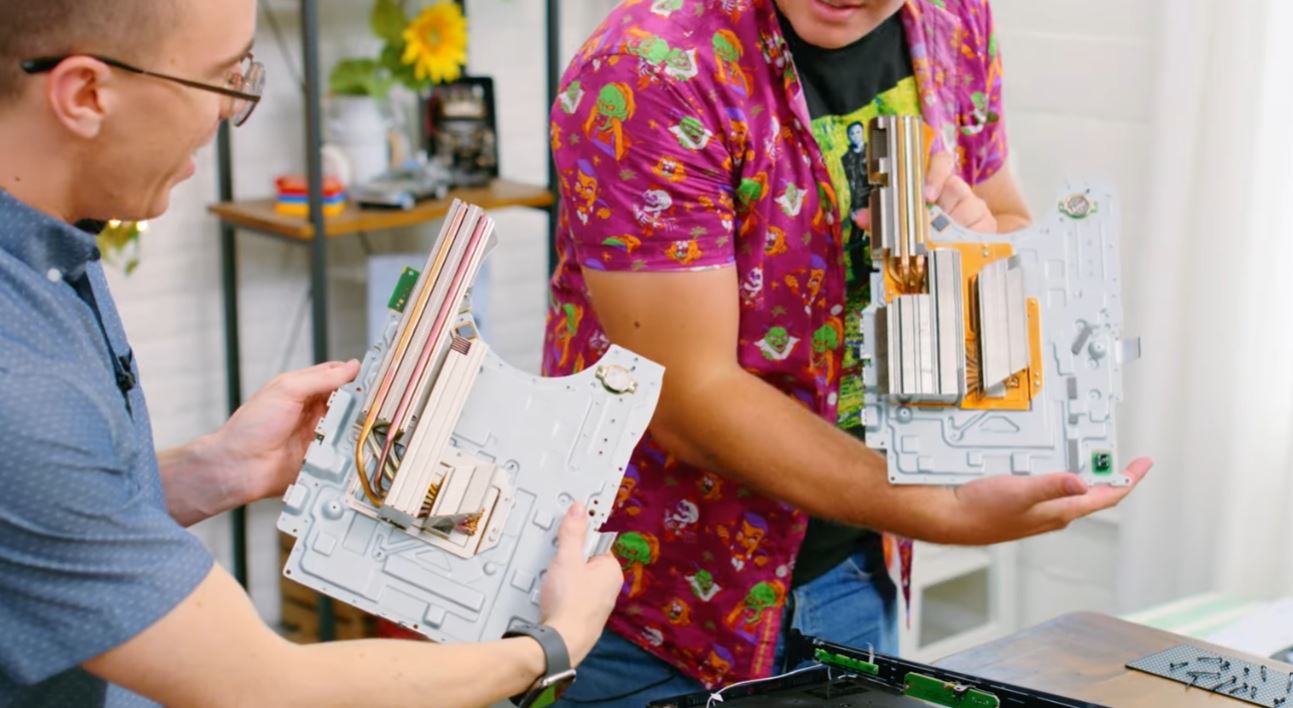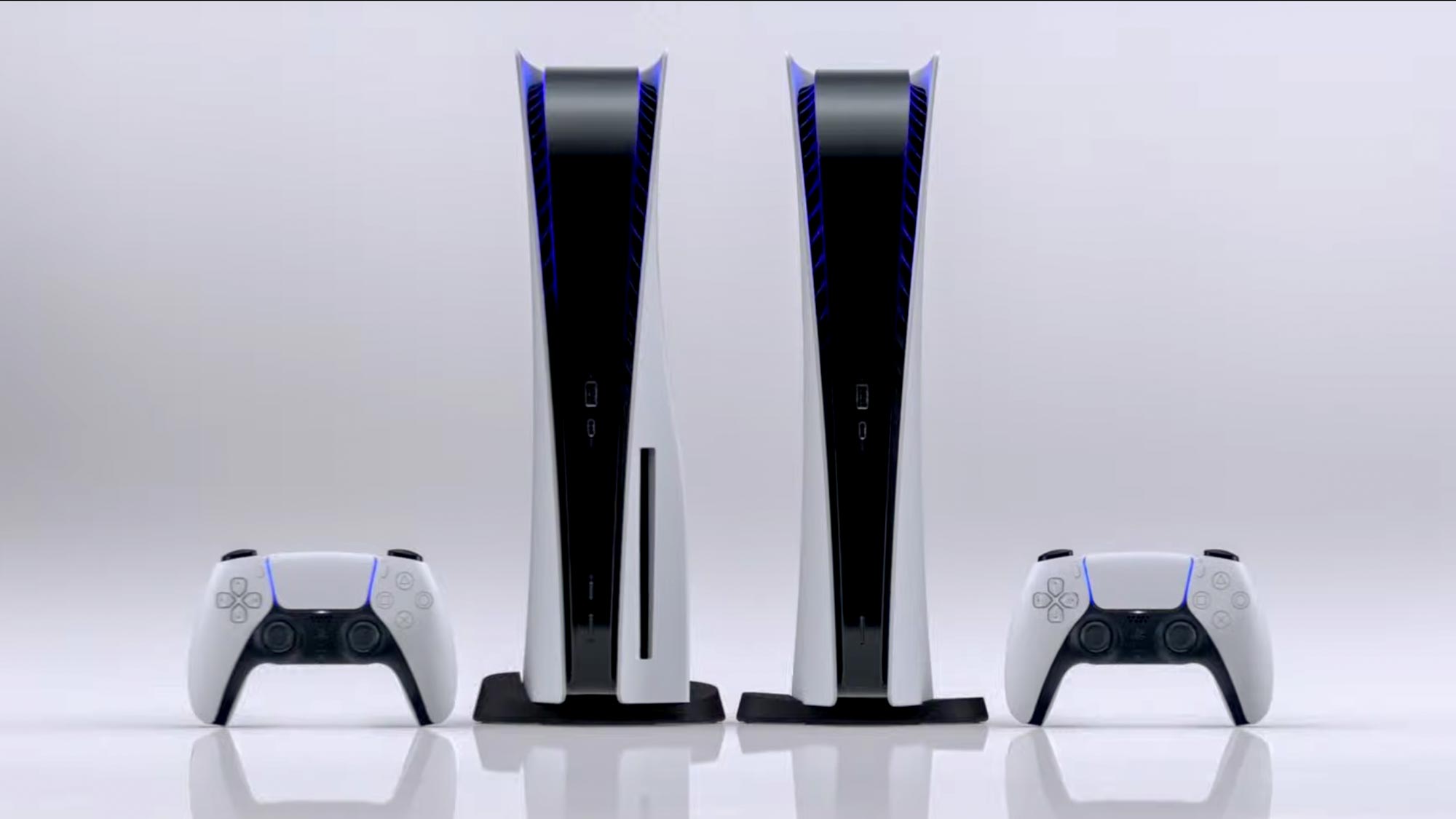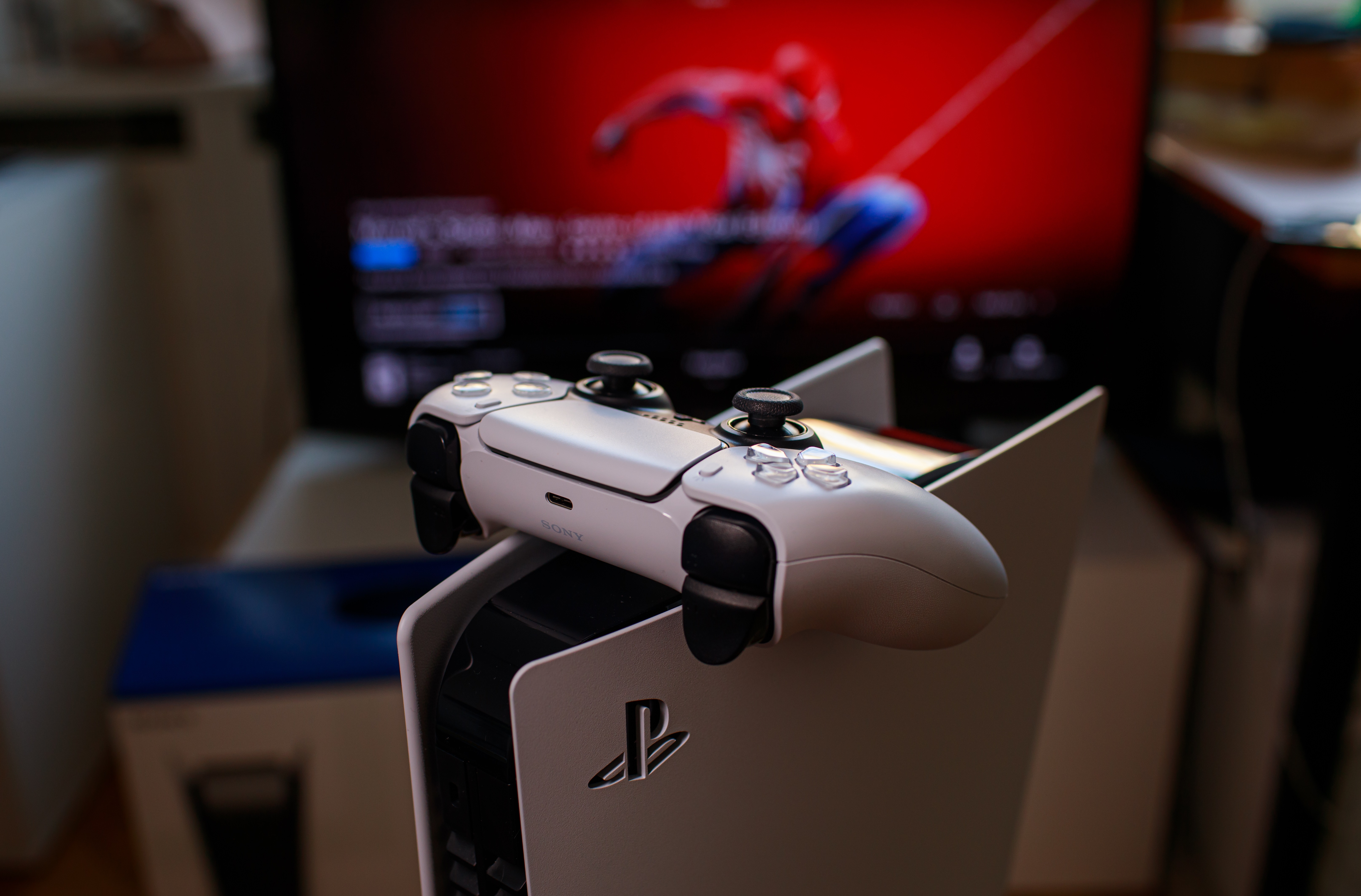New PS5 heatsink explained: What you need to know
New PS5 heatsink explained: What you demand to know

If you've been trying to get a PS5 — and practiced luck with PS5 restocks, incidentally — you may have heard that there's a new PS5 model on the market place. The PS5 model CFI-1100 (rolls right off the tongue, doesn't information technology?) looks similar it's on track to slowly replace the CFI-1000, which has been the standard PS5 model since launch.
The CFI-1100 is somewhat lighter and quieter than the original PS5, which is expert. But it as well has a smaller heatsink, which is either non a big bargain or catastrophic, depending on where you've read about it.
The fact is, there's a lot of information and misinformation swirling around the CFI-1100's smaller heatsink. Bluntly, it tin be difficult to tell the two autonomously sometimes. Having read both the apocalyptic and optimistic takes on the situation, I can say that there'southward at least a little merit to both arguments.
- Play the all-time PS5 games
- Destiny two: The Witch Queen could force me back into the game
- Plus: Ownership a PS5 or Xbox Series X probably won't get easier before 2023
Could a smaller PS5 heatsink adversely impact the motorcar at some indicate in the future? Aye. Does this hateful that the CFI-1100 is substantially an electrical burn down waiting to happen? No.
Much ado about PS5 heatsinks

Offset, to sympathise why the PS5'southward revised heatsink may or may not be a big bargain, it's helpful to sympathize exactly what a heatsink is, and does.
A figurer — and what are consoles, if non highly specialized computers? — generates a lot of rut, primarily via electricity powering its diverse components. Every component has a temperature threshold, across which it ceases to operate. A heatsink absorbs excess heat, then shunts it outside of the computer, unremarkably via a fan. In the PS5, the heatsink and fan are located in the rear of the device, which is why you'll feel hot air blowing if you put your hand behind the console.
Many factors touch on a heatsink's efficiency, from its materials to its construction. All other things being equal, however, larger heatsinks can store, and thus dissipate, more heat. So when YouTube reviewer Austin Evans discovered that the CFI-1100's heatsink was 300 grams lighter than the CFI-yard'due south, he was understandably concerned.
Later testing the CFI-grand and the CFI-1100 side-past-side, Evans discovered that the newer model ran 3-five degrees (Celsius) hotter. He theorized that over fourth dimension, this might cause the PS5's components to fire out faster. After all, if the new heatsink is less efficient at dispersing heat, wouldn't that revenue enhancement the PS5's components just a little scrap more with each use?
Equally with a lot of technology, the answer is "information technology depends." Evans' show that the new PS5 model runs hotter is credible. Just whether that increment in temperature is guaranteed — or even likely — to harm the device over fourth dimension is much less sure.
An exhausting analysis

Richard Leadbetter, the technology editor at Digital Foundry, also had a look at the CF-1100'southward heatsink and operation. He didn't measure the exhaust temperature, every bit Evans did. Just he also pointed out something that Evans may have overlooked: frazzle temperature isn't a particularly revealing metric for system performance.
"The crux of the controversy surrounding Evans' video stems from his view that the new PS5 is worse than the old ane – it'due south his contention that a smaller cooler made from less efficient materials produces a hotter machine," Leadbetter wrote. "It's not an outlandish theory past any means when you look at the mass and material reductions but the question of whether it's hotter or not cannot be determined by measuring the heat output of the frazzle lonely and even if it does run a few degrees hotter, information technology may well all the same be within manufacturer'southward tolerances."
In other words: Exhaust temperature isn't a direct measurement of how hot any of the PS5'southward components get. And even if it were, nosotros don't know exactly how hot the PS5'southward components can get before they showtime to degrade over fourth dimension. Even if individual components run hotter than before, merely running hotter isn't necessarily harmful. The harm occurs only when the components routinely exceed their estrus tolerances.
According to Leadbetter, there's no prove that this is happening. The CFI-1100's power draw seems identical to the CFI-1000's, and the fan did not suddenly start working overtime to expel massive amounts of rut. In other words: Nevertheless, hot the CFI-1100 is running, it doesn't seem to be running hot plenty to adversely affect performance in whatever way.
Granted, Evans never claimed that the CFI-1100 doesn't work properly, only that it might not agree up over time. Leadbetter does not retrieve that's a ridiculous thought — and, for the record, neither do I. After all, if a device overheats excessively, it will just close downwardly. But the new PS5 overheats just a niggling chip, time after fourth dimension, over the course of years, information technology could somewhen outset losing performance, and even burn out entirely. Unfortunately, without observing CFI-1000s and CFI-1100s under comparable conditions for the adjacent few years, we simply won't know for sure.
Should you purchase a PS5 CFI-1100?

Of the 2 analyses, I observe Leadbetter's to be the more compelling. Measuring exhaust doesn't necessarily tell united states of america how hot each component gets, and information technology definitely doesn't tell united states of america what each component's heat tolerance is. Video game consoles draw a lot of ability, and people tend to apply them for hours on terminate. The idea that Sony knowingly shipped something that's likely to burn itself out in a few years is not consistent with how the company has designed consoles in the past.
Besides, equally Leadbetter points out, at that place is still one very compelling reason to buy the CFI-1100 model of the PS5: It may be the only one yous can get. Right now, it's still very much a scalper'southward marketplace for side by side-gen consoles, and Sony will probably stage out the CFI-one thousand over the next few months. If yous're lucky enough to notice a PS5, you lot won't take the opportunity to scrutinize serial numbers; you'll have to buy it earlier someone else yanks it out of your online shopping cart.
In short, the new heatsink is probably fine, and if you become a CFI-1100 model, you'll probably be fine, likewise. If it runs into massive overheating bug years downward the line, however, rest assured that you won't be the simply one suffering from them — and that panel manufacturers are pretty skillful nearly addressing widespread hardware failures.
Source: https://www.tomsguide.com/news/ps5-heatsink-explained
Posted by: dvorakpureart.blogspot.com


0 Response to "New PS5 heatsink explained: What you need to know"
Post a Comment